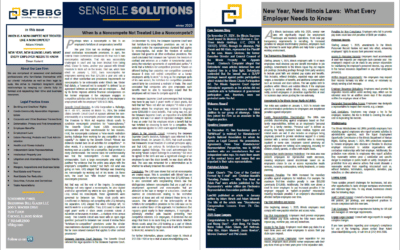When Independent Sales Representatives get together to network in either a public or private forum, the discussion often turns to, “What happens to my agency in the event of my death, disability, or retirement? What is the best way to retire without hurting my employees, principals, customers, and other important industry relationships?”
Many middle-aged sales reps start to think about death, disability, retirement, and succession planning. Beyond middle-age, the internal light bulb starts to flicker just a little, and as time passes it glows brighter and brighter until the need to take the bold step toward succession planning is fully illuminated. It is never too early to start.
Succession planning is important not only to reps, but to their key employees, principals, and customers. The founder of the rep agency working hard to leave something for the family needs a plan in place if “something happens”. What happens if the rep/founder becomes sick, gets in an automobile accident, or needs to take time off to address a family emergency or other crisis? The future is unknown.
It would be a disservice to key employees who are hard working dedicated, ambitious and have all the outstanding qualities and loyalties of a successful team member not to make them aware of where their future lies. Who can blame them for wanting to know, wanting to get ahead? Most organizations, no matter how large or small, need an heir apparent in place. Valued employees without a clear idea of what the future holds often leave for better opportunities.
Succession planning is equally important to principals. It is a frequently discussed issue among principals vested in the continued success and viability of the sales agency, and who have an interest in its important to principals for continuity. Principals who are familiar with working with rep agencies and who are comfortable with the rep’s personnel will respect the rep careful enough to plan for the future.
When considering succession planning, a rep agency must ask the basic questions: “What are we selling? What is the buyer buying?” The agency typically has no inventory, little equipment, and no long-term contracts. The agency’s income is speculative, thirty-day contracts are the norm and future commissions are unknown. One of the agency’s most valuable assets is its goodwill, the ability to make a profit. This asset is comprised of the team that has been built, the brand that has been nurtured and promoted, the principals, customers and employees that have trained and educated.
The succession plan or plan to transition the agency will most often involve existing co-owners, whether they are partners, co-shareholders or members of a limited liability company, and employees. Key employees and co-owners are the most logical and qualified persons to succeed in the agency.
Other likely possibilities include outside merger/acquisition partners. Those outside partners might be existing rep agencies who value the synergy of the competitor’s business. Another rep will appreciate the success achieved in a similar or related industry, and in a similar or adjacent territory. Likewise, another industry player will recognize the similar goals, objectives and work ethic of a rival. It is also possible that an outside partner may be someone the owner knows in the industry who is looking to acquire an agency, perhaps to expand the territory, to expand the lines or just build a larger organization.
There are four basic steps to developing a succession plan:
1. Due diligence by the buyer;
2. Determining the value, purchase price, and terms of payment;
3. Structuring the transaction; and
4. Preparing the necessary legal documents and conditions of the sale.
With respect to due diligence, the parties will customarily sign a mutual non-disclosure agreement so the transaction will be kept confidential. The buyer wants to be protected against outside bidders. The seller does not want its employees, customers, principals, or competitors to be aware that it is considering putting the agency on the market. All parties need to be protected from disclosure and improper use of the confidential information shared in the course of negotiating and implementing the succession plan.
The buyer will want to review the seller’s financial statements, line card, and any building leases and other agreements with employees and sub-reps. The buyer will be looking for upswings and down trends in the business, sources of income, the percentage of revenue from top lines, etc. It will be important for the buyer to review each of the seller’s rep agreements to determine if a transfer of ownership could trigger a termination by principals. All principals must be contacted and made comfortable with the succession so they perceive the transition as a seamless and positive transfer of ownership.
Determining the value or purchase price of the agency has numerous ramifications. There are many methods and formulas for determining the value of a rep agency, but ultimately a rep agency is worth the price at which a buyer is willing to pay and the owner is willing to sell. A rule of thumb often used as a starting point is one year’s gross commission income, but that number often gives way to using an average or weighted average and multiplying the result by an agreed factor between 75% and 125%. In unusual cases, rep agencies sell using a factor as high as 150%. Although not common, some rep owners engage an independent business appraiser in determining the value of the rep agency, which often leads to a fixed purchase price and fixed monthly payments. However, the bottom line is if the buyer cannot pay the fixed monthly payments, then the seller simply will not get paid unless protected by very strong security, such as a mortgage on the buyer’s home, other business or like collateral.
In practice, a variable purchase price for the agency often is the preferred option. From a practical standpoint, the buyer and seller are always at risk if the agency does not continue to do well. If the purchase price is too high, the buyer will not be able to pay. Lawsuits to collect are expensive, and if the non-payment results from a lack of funds, generally not worthwhile. A variable purchase price often solves those types of problems.
An agreed percentage of gross commissions paid monthly for a given number of months will often work best for both parties. One proven formula enables the buyer to pay the seller 15% of the gross commissions (paid monthly) for a period of seven years. That totals 105% of gross commissions of the rep agency (15% x 7 = 105%). If the commission income increases, the seller benefits because 15% of a greater number yields more dollars to the seller. The buyer also benefits because if the buyer is paying 15% of gross commission income to the seller, then there is 85% left over for the buyer. If the business is on the downtrend, loses an important principal, customers or a valuable employee, the buyer will not be able to pay the seller anyway resulting in a lower sales price. When appropriate, the buyer can be protected with an agreed cap on the upside, and the seller can be protected with a floor on the downside.
The transaction must be structured so that it is most efficient for both parties from a tax and business standpoint. The transaction will typically be a sale of the company’s assets or the owner’s stock. The attorneys and accountants must look at the tax considerations, and perhaps use consulting agreements to shift the tax benefits or burdens from one party to the other in order to make the transaction fair.
If the seller is a C corporation and sells assets, there is taxable gain and a double layer of tax, namely tax at the corporate level and tax at the shareholder level, which results in an inefficient transaction. Therefore, if the seller is a C corporation, it is best for the corporation to sell stock, provided the purchaser can be convinced to accept the liabilities that go along with such a stock transaction. This can often be accomplished with proper indemnifications, hold harmless agreements and most importantly, extensive due diligence by the buyer.
If an S Corporation sells assets there is no tax at the corporate level, but all taxes flow through to the shareholders. This single tax makes an S corp sale of assets more efficient for the Seller.
In an asset transaction, the parties must allocate the purchase price among the various classes of assets. The buyer will get a stepped-up basis in each asset class, and greater depreciation of the purchase price for each class of assets.
The basic legal documents for a typical succession plan include:
1. A Letter of Intent or Term Sheet which spells out the deal terms and serves as an outline for the transaction.
2. The Purchase and Sale Documents such as an Asset Purchase Agreement or Stock Purchase Agreement.
3. A Promissory Note (if there is a fixed purchase price).
4. Security documents to secure the payment, such as a lien on the commission income stream, or a personal guaranty.
Succession planning must start early in order to be successful. The services of a competent accountant, attorney and perhaps a financial advisor are not unusual. The final result of a successful succession plan will be peace and harmony within the business and the agency, cooperation and contentment from principals and customers, substantial financial rewards for the owner, significant opportunities for the buyer, and a cohesiveness among both key and non-key employees of the agency.



